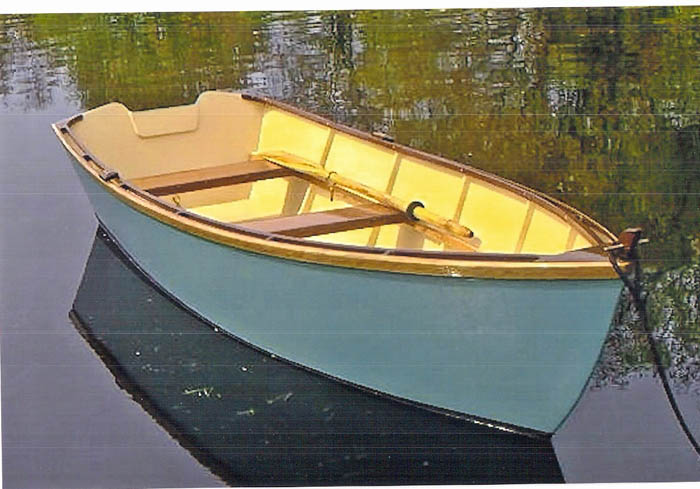
Skiff Plans for Affordable, DIY Boat Builds: A Comprehensive Guide
For those yearning to experience the freedom and joy of being on the water, building your own skiff presents a rewarding and affordable endeavor. Skiffs, known for their simple design and versatility, are perfect for beginners and seasoned boat builders alike. This comprehensive guide delves into the world of skiff plans, offering insights into their affordability, design considerations, and the DIY construction process.
The Appeal of Skiff Plans
Skiff plans offer a unique combination of accessibility and practicality, making them ideal for DIY boat building projects.
Affordability
Skiff plans are often more budget-friendly than purchasing a pre-built boat. By constructing your own skiff, you can save significantly on costs, especially considering the price of materials and labor for boat building.
Versatility
Skiffs are renowned for their versatility. They can be adapted for various purposes, including fishing, cruising, and even tendering larger vessels. Their shallow draft allows them to navigate shallow waters, making them suitable for exploring rivers, lakes, and coastal areas.
Simple Design
Skiff plans typically feature a straightforward design, making them easier for novice boat builders to understand and execute. This simplicity translates into a manageable and enjoyable construction process.
Types of Skiff Plans
A plethora of skiff plans cater to different needs and preferences. Here are some popular types:
Flat-Bottom Skiffs
As their name suggests, flat-bottom skiffs feature a flat hull, providing excellent stability in shallow waters. They are perfect for fishing, leisurely cruising, and exploring calm waters.
Vee-Bottom Skiffs
Vee-bottom skiffs boast a more pronounced hull shape, offering better performance in choppy waters. Their pointed bow slices through waves, making them suitable for coastal cruising and navigating rougher conditions.
Jon Boats
Jon boats are known for their flat bottom and squared-off bow. They are incredibly stable and versatile, often used for fishing, hunting, and utility purposes.
Duck Boats
Duck boats are specifically designed for hunting waterfowl. Their shallow draft and wide, stable hull allow them to navigate shallow marshes and wetlands.
Choosing the Right Skiff Plan
Selecting the appropriate skiff plan is crucial for a successful and enjoyable build. Here are key factors to consider:
Intended Use
Determine the primary purpose of your skiff. Are you planning to fish, cruise, or use it for specific activities like hunting? Your intended use will guide your plan selection.
Size and Capacity
Consider the number of people and the amount of gear you plan to carry. Choose a skiff plan that offers sufficient size and weight capacity for your needs.
Skill Level
Be realistic about your boat building skills. Choose a plan that aligns with your experience and comfort level. Beginners may opt for simpler designs, while seasoned builders can tackle more complex plans.
Materials and Budget
Skiff plans often specify materials and quantities, but it's essential to research and compare prices. Factor in the cost of materials, tools, and any additional expenses.
Skiff Plan Resources
Numerous resources offer skiff plans for DIY boat builders. Here are some popular options:
Online Retailers
- Glen-L Marine Designs
- Boat Plans USA
- Duckworks Boatbuilders Supply
Boat Building Magazines
- WoodenBoat
- Small Boats Magazine
- Practical Sailor
Boat Building Forums
- The Boat Design Forum
- The WoodenBoat Forum
DIY Skiff Construction
Once you've chosen a skiff plan, you're ready to embark on the exciting journey of construction. Here's a general overview of the process:
Materials and Tools
Gather the necessary materials and tools as specified by your chosen plan. These may include:
- Lumber (plywood, marine-grade plywood, cedar)
- Epoxy resin and hardener
- Fiberglass cloth and resin
- Fasteners (screws, bolts, rivets)
- Power tools (circular saw, drill, sander)
- Hand tools (hammer, screwdriver, measuring tape)
Assembly
Follow the detailed instructions provided in your skiff plan meticulously. The process typically involves:
- Cutting and shaping the hull components
- Assembling the hull using epoxy or adhesives
- Adding structural supports and stringers
- Constructing the deck and other interior components
Finishing
Once the hull is assembled, the finishing touches involve:
- Sanding and smoothing the hull
- Applying primer and paint
- Installing hardware (engine, steering, seats)
- Rigging and testing
Safety and Regulations
Boat building is a rewarding experience, but safety should always be paramount. Always adhere to safety guidelines when working with tools and materials. Additionally, familiarize yourself with local boating regulations and ensure your skiff meets safety standards.
Conclusion
Skiff plans offer an excellent opportunity to build your own boat, experiencing the satisfaction of a DIY project while saving money. By choosing the right plan, gathering necessary materials, and following construction steps carefully, you can create a sturdy and versatile skiff to enjoy on the water. Remember to prioritize safety and ensure compliance with regulations for a fulfilling and enjoyable boating experience.






No comments:
Post a Comment
Note: Only a member of this blog may post a comment.